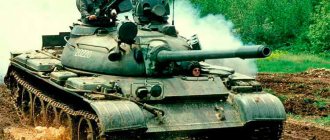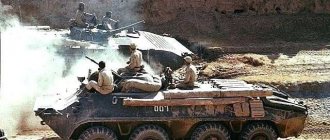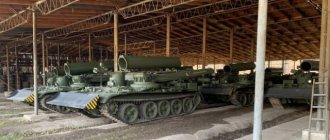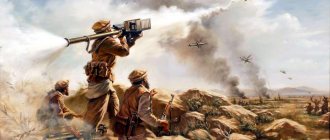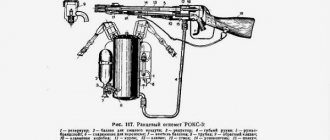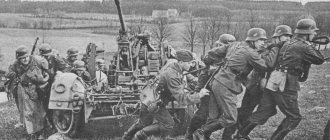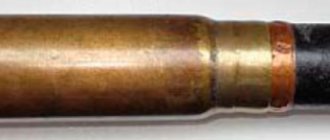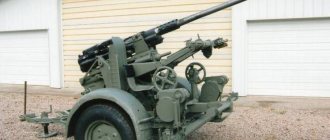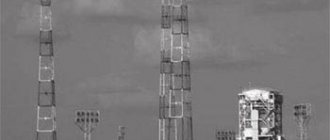Introduction
Every year, celebrating the next anniversary of the withdrawal of Soviet troops from Afghanistan, we traditionally remember the heroes of that war. But the memory of Afghanistan is not only a tribute to the people who heroically performed their duty, their valor and courage. This is a very large contribution to the art of war, a reason for rethinking the essence of modern conflicts, an invaluable experience, which, unfortunately, has not yet been fully utilized.
During the second Chechen war, the Russian command proudly declared: 59% of front-line and army aviation crew commanders were former Afghans. In the context of many years of decline in the quality of training of flight personnel and combat operations in mountainous conditions similar to Afghanistan, the experience of each veteran has become worth its weight in gold.
Despite the fact that the Afghan war ended more than twenty years ago, the experience gained in the use of aviation is still in demand, especially since today the main type of armed conflict on the planet remains just guerrilla, or so-called “small” war.
Officially, the experience of that war was never fully analyzed. After the end of the war, the General Staff of the USSR Armed Forces developed drafts of new instructions, manuals and guidelines. Everything came down to a political decision: according to the Politburo of the CPSU Central Committee, counterinsurgency actions cannot be characteristic of the Soviet army, which is preparing for a “big” war with NATO, so the experience of Afghanistan was considered unnecessary.
They remembered him only with the beginning of the first Chechen war. It was then that the precious experience, which was paid for with the blood of Soviet pilots, began to be studied and systematized. However, in many ways it was lost.
This book is based on numerous interviews and conversations conducted by the author at different times. In this regard, I would like to express gratitude for the assistance provided to the following participants in the Afghan war:
Balyberdin Nikolai Petrovich – senior lieutenant, technician in the maintenance group, 50th smallpox (1980–1981)
Vinogradov Alexander Anatolyevich – reserve major, 50th Osap (1985–1986)
Voronin Evgeniy Nikolaevich – reserve major, 205th military regiment (1987–1988)
Dron Viktor Iosifovich – reserve lieutenant colonel, 50th smallpox (September 1988 – February 1989)
Zhilov Valery Leonidovich – lieutenant, aircraft technician of the 263rd Airlift Squadron (1987–1988)
Zinchenko Vladimir, 280th airborne regiment, 4th squadron, on-board technician-instructor of the Mi-24 helicopter (1985–1986)
Evgeniy Mikhailovich Ivanov – reserve lieutenant colonel, at the time of hostilities, chief of staff of the 1st Airborne Infantry Brigade, 302nd Airborne Infantry Infantry (1988–1989)
Ilyashenko Sergey Vladimirovich - lieutenant, 50th smallpox (September 1987 - September 1988)
Kayumov Vladislav – reserve colonel, 262nd military unit (1985–1986)
Koblov Viktor Mikhailovich - senior pilot, military pilot 3rd class, senior lieutenant, 2nd air regiment, 136th apib (November 1986 - November 1987)
Kovrukov Alexey Anatolyevich – senior technician of the aviation weapons and airborne transport equipment maintenance group, 239th airborne regiment (1987–1988)
Korsakov Andrey Vasilievich – reserve major, 181st military regiment (1987–1988)
Kukovets Ivan Ivanovich – reserve major, flight technician of the 50th smallpox (1986–1987)
Lazarev Alexander Valerievich - served in the DRA from October 1983 to October 1984 in Shindant as the head of the technical unit of the Mi-24 detachment as part of the 302nd OVE, in Jalalabad as deputy chief of staff obato
Langovoy Anatoly Petrovich – on-board technician of the Mi-8MT of the 50th Osap (1985–1986)
Leiman Ivan Ivanovich – senior lieutenant, on-board aviation technician, air gunner of the Mi-8 helicopter of the 292nd air defense regiment (1980–1981)
Marusin Evgeniy Evgenievich – reserve major (1982–1983)
Melkonyan Samvel Rafikovich, 50th smallpox
Menyashev Rafail Abbyasovich - captain, pilot-operator, 50th smallpox (1986–1987)
Mokeev Anatoly Aleksandrovich – reserve lieutenant colonel, 50th smallpox (1987–1988)
Nezhizhim Vyacheslav Vasilievich – reserve major, 262nd OVE (1981–1982)
Nemchaninov Konstantin Viktorovich - head of the OK group of the 50th smallpox (August 1986 - August 1987)
Obyedkov Anatoly Ivanovich – reserve major, 387th unit (1986–1987)
Pavlov Vitaly Egorovich - Colonel General, Hero of the Soviet Union, 50th smallpox. Recording of the conversation was kindly provided by S. Burdin (Belarus)
Andrey Plyushchev – reserve lieutenant colonel, OD KP 50th Osap (1986–1987)
Rudakov Sergey Vladimirovich – reserve captain, 335th airborne regiment (1984–1985)
Semenov Valery Anatolyevich - captain, flight commander, 27th Guards. IAP (1981–1982)
Sidorenko Sergey Ivanovich – commander of the Mi-24 squadron of the 50th Osap (1982–1983)
Vitaly Sergeevich Fadeev – reserve major, 335th airborne regiment (1984–1985 and 1987–1988)
Chernienko Vladimir Grigorievich - major, 50th smallpox (1988–1989)
Shabanov Dmitry Viktorovich - reserve captain, 50th smallpox (July 1985 - October 1986)
Shalomey Igor Petrovich - retired colonel, deputy commander of the 254th military unit (August 1981 - September 1982)
Shapovalov Sergey Leonidovich – senior lieutenant, flight engineer, 50th smallpox (1980–1981)
I would also like to express my gratitude to my fellow writers - Sergei Burdin, Alexander Zablotsky, Igor Seydov and many others.
ELECTRONIC LIBRARY ModernLib.Net
DEPLOYMENT OF THE SOVIET AVIATION FORCE
Soviet pilots were drawn into the Afghan war actually even before its official start date of December 25, 1979. The fact is that military transport aircraft have been delivering military cargo to all airfields in Afghanistan since 1977.
However, flights became especially intense in the fall of 1979. As Colonel Valentin Dmitrievich Gerasimenko, adviser to the head of the Signal Troops and RTO of the Air Force and Air Defense of the DRA (1980–1981), recalled, “in October 1979, the arrivals of military aviation aircraft to the Kabul airfield became more frequent. More often they were Il-76, less often An-22. For days they arrived on several planes and, quickly unloading, flew away. As usual, Kabul airport could only receive planes during the day.
But in October and especially in November, ten and even twenty Il-76s landed on Kabul at night. The planes were freed from their cargo and departed before dawn. What they brought “disappeared” from the airport also before dawn.
Foreign correspondents accredited in Kabul tried unsuccessfully to uncover the nature of the night traffic. To answer their numerous questions, the Afghan Ministry of Foreign Affairs held almost daily press conferences and briefings, at which, in response to regular questions about the night transportation of Soviet aviation, they answered that a group of transport aircraft of the USSR Civil Air Fleet was based in Bagram (“as you, gentlemen, know”) Aeroflot identification marks were indeed present on the sides of the An-12). During the day, at our request, they transport various cargoes, and at night they work out the training tasks assigned to Afghan pilots in order to acquire the appropriate flight qualifications. Mostly there are night takeoffs and landings, so it seems like there are a lot of planes coming in.”
It is not possible to provide general statistics of flights at the moment; I will give a chronicle of Soviet transport aviation flights to Afghan airfields for only a few days in March 1979:
And in addition, by December 1979 there were aviation units that were based directly on the territory of Afghanistan: for example, a helicopter squadron from the 280th airborne regiment (commander - Lieutenant Colonel Belov) and the 224th separate MGA detachment, consisting of eight An-12 (commander - Colonel Ishmuratov)[2].
Very little is known about these units and the nature of their actions during that period. Having collected scattered information, we can state the following: the “Belov group” itself consisted of military personnel of the 280th Army Aviation of the USSR Air Force, which was based at the Kagan airfield. The most trained crews were selected for the group on a voluntary basis, with preference given to pilots who had experience flying in the Pamirs.
In preparation for the transfer of the squadron to Afghanistan, the stars were painted over on 12 helicopters and the identification marks of the DRA Air Force were applied with homemade stencils. At the same time, the crews changed their standard uniforms to overalls and civilian clothes.
On August 23, 1979, the group took off under its own power from Kagan and after a five-hour flight landed at Bagram airbase. In parallel, 24 flights were carried out by An-12 transport aircraft and 4 flights by Il-76 to deliver technical equipment. Initially, the direct participation of Soviet helicopter pilots in combat operations was expected, but the chief military adviser (to whom, in fact, the squadron was subordinate) almost immediately introduced a ban on the participation of squadron pilots in combat operations. Moreover, Soviet crews were even ordered to refrain from returning fire while performing their tasks.
The primary tasks were identified as: delivery of cargo, personnel, food to Gardez and Shindand, and most importantly, “government transportation.” One helicopter was constantly on standby to support possible search and rescue efforts. In addition to Bagram, individual crews were periodically on duty in provincial centers and in Kabul.
The Afghan leadership assessed the work of the transport helicopter squadron in its own way and tried to occupy it with the transportation of national economic goods. At the same time, as some researchers of Afghan issues note, the squadron has become an instrument in a large-scale political and economic game. The fact is that the USSR provided military assistance to Afghanistan practically free of charge. However, there were other economic agreements, the legal successor of which was post-revolutionary Afghanistan. Thus, for gas supplies, the USSR owed Afghanistan, according to various estimates, from 270 to 500 million US dollars. But Afghanistan did not pay off this debt through military supplies from the USSR. Afghanistan was offered to buy a batch of Mi-8s through Aviaexport, and a real payment was expected for the supplied vehicles and spare parts for them. The Afghan leadership refused, having such support as a free Mi-8 squadron with Soviet crews and service. Then the Soviet leadership gave the order to send the squadron home and began to implement the plan. This forced the Afghans to fork out money. But even after that, they insisted on using reliable Soviet equipment with even more reliable crews.
It is also worth saying that at the end of 1979 there were more than enough Soviet pilots in Afghanistan: according to intergovernmental agreements, there were Soviet military specialists in all Afghan aviation units (up to the squadron level).
Advisors - senior teams of the Air Force and Air Defense of the DRA in the period 1978–1979. worked: Major General of Aviation O.G. Orlov, Aviation Major General A.G. Arevshetyan, Colonel N.D. Orlov, Colonel N.G. Berdichevsky, Colonel E.I. Mishustin, Major V.A. Infantry, Lieutenant Colonel V.D. Stadnichenko, Colonel A.I. Postelnikov.
In addition, the following people worked at the General Staff of the Air Force and Air Defense of the DRA during this period: Aviation Major General A.A. Egorov, Colonels E.N. Kuznetsov, P.M. Kopachev, N.P. Kozin, O.S. Savrasenko, Yu.V. Razuvaev, V.P. Anokhin, I.I. Nesterenko, A.I. Uvarov and others.
Another little-known fact is also interesting: immediately before the entry of the Soviet contingent, Afghan aircraft arrived at Bagram airfield after major repairs and were ferryed by Soviet crews. It was no coincidence that these pilots stayed late - in order to take direct part in the hostilities.
In early December 1979, USSR Minister of Defense Marshal of the Soviet Union D.F. Ustinov brought information to the leadership of the General Staff that in the near future a political decision might be made to send a group of Soviet troops in the amount of up to 75 thousand people to Afghanistan.
On December 25, 1979, at 18:00 local time, the airlift of airborne troops to Kabul and Bagram airfields began. Thus, to transport personnel and equipment of the 103rd Airborne Division and a separate parachute regiment, 343 aircraft flights were made, including 66 An-22 flights, 77 Il-76 flights and 200 An-12 flights. In total, 7,700 personnel, 894 units of military equipment and 1,062 tons of various cargo were delivered to both airfields.
Here is how, for example, Soviet adviser Colonel Valentin Dmitrievich Gerasimenko described the events at the Kabul airport: “Il-76 planes landed at regular intervals, turned into taxiways and, while still in motion, lowered the ramps and opened all the hatches. During short stops with the engines running, paratroopers poured out from the inside of the sides and 1 to 3 BMDs jumped out, artillery pieces and other equipment rolled out. The planes taxied further and, as the runway cleared, they took off and left for new personnel and equipment.”
As for the invasion aviation group, it was created by mid-March 1980, taking into account the deployment and conduct of combat operations by combined arms formations and units in isolated operational directions.
Naturally, the basis for the basing of aviation units was the airfield network of the Afghan Air Force, which ensured, if necessary, the regrouping of aviation in order to increase its efforts in certain areas.
According to military intelligence, before the introduction of OKSV, the country’s airfield network was as follows: “On the territory of Afghanistan there are 28 airfields, including 9 with permanent runways (runways), 8 of them are suitable for basing tactical aviation, their estimated operational capacity was 120–160 aircraft. The largest airfields are Bagram, Kabul (Khoja Revash), Kandahar, Herat and Shindand (Sebzevar). The airfields of Kabul and Kandahar are classified as international. All these airfields are equipped with 1–2 permanent runways, predominantly 45 m wide, taxiways and group concrete aircraft stands. At these airfields there are warehouses for various purposes, hangars, service and residential buildings. Aircraft shelters made from protective walls were built only at the Bagram airfield.
Unpaved airfields are used mainly by civil aviation. 6 unpaved airfields can be used as alternate airfields for basing tactical aircraft - in Dehdadi, Lashkar Gah, Matun, Kandahar, Faizabad and Chagcharan. Airfields with runways less than 1,800 m long are used by light aircraft. The DRA's air force is permanently based at the most equipped airfields: Bagram, Jalalabad, Kabul, Mazar-i-Sharif and Shindand. The main means of radio navigation equipment in Afghanistan are medium-wave radio beacons available at 11 airfields. The airfields of Kabul (Khoja Revash) and Kandahar also have a short-range radio navigation system. The length of international airlines in the country is over 2 thousand km. Air transportation is carried out by one national airline, which serves both domestic and international airlines.”[3].
Thus, at the time of the entry of Soviet troops into Afghanistan, there were few airfields, and with the increase in the aviation component, the question of building new airfields almost immediately became acute. In the shortest possible time, several sets of metal airfield pavement from K-1D slabs were delivered to create runways and taxiways.
The airfield engineering service of the Air Force of TurkVO was able to complete the country's airfield network - by mid-1985, Soviet units had built or significantly refurbished seven Afghan airfields: Herat, Shindand, Farah, Kandahar, Kabul International Airport, Bagram and Jalalabad. The airfields in Mazar-i-Sharif, Kunduz, Ghanzi and Pol-i-Shakri were not of strategic importance and were reconstructed to a much lesser extent.
Thus, during the war in Afghanistan, eleven airfields were capable of providing round-the-clock jet flights in all weather conditions, although Jalalabad was used only by helicopter pilots.
The key bases for the basing of Soviet aviation were the bases in Bagram (the largest number of Soviet aircraft and helicopters were based here) and Shindand (here, among other things, repairs and maintenance of aircraft were carried out). From these airfields, combat flights were carried out mainly by Su-25 attack aircraft and MiG-23 fighters.
At the airfields where Soviet aviation was based, radio navigation and communications equipment were additionally installed, and joint command posts were created to direct flights, control combat operations, as well as air traffic of Soviet and Afghan aviation over the territory of Afghanistan.
Soviet air units, together with Afghan ones, were based at four airfields (Kabul, Bagram, Shindand and Kandahar), and Soviet (Kunduz, Faizabad and Jalalabad) and Afghan (Mazar-i-Sharif) units were based separately at four airfields.
During the regrouping of aviation in the interests of upcoming operations, Soviet and Afghan aircraft and helicopters were jointly based at almost all available airfields. To strengthen the security and defense of airfields, one motorized rifle (less often parachute) battalion was allocated to each of them.
The total staffing of the Soviet aviation group in Afghanistan (40th Army Air Force) initially included two aviation regiments and one separate squadron, one mixed aviation and three separate helicopter regiments, three separate helicopter squadrons and one helicopter detachment.
A total of 60 combat aircraft and 19 military transport aircraft, 253 combat and transport-combat helicopters. Taking into account the physical and geographical conditions and the deployment of combined arms formations and individual units of the 40th Army and the combat areas assigned to them, the aviation group in Afghanistan (40th Air Force A) was divided into four groups: “North”, “and West” . Combat composition of the Air Force of the 40th Army as of January 2, 1980.
Sometimes, during major operations, individual aviation units from these groups were involved in operations in other areas, however, when planning combat operations, they tried to avoid this due to the difficulties of regrouping aviation. Reconnaissance aircraft and bombers from the Long-Range Aviation were “working” in the skies of Afghanistan. Quite a few visited Afghan airfields and ambulance aircraft, for which, according to the mobilization plan, Il-18s from the Ural air squads of the civil air fleet were converted.
With the relocation of fighters and fighter-bombers to Afghanistan at the airfields of Bagram (115th Guards IAP), Kandahar (136th IAP) and Shindand (217th IAP, then a squadron of the 136th), combat duty of Soviet aircraft was introduced in the general system Air defense of Afghanistan.
Already during the deployment of troops to Afghanistan, Soviet aviation suffered its first loss - on December 25, 1979, an Il-76 crashed with paratroopers on board.
Flying as part of a trio of Il-76M from the 128th Guards VtP (commander - Captain V.V. Golovchin), while constructing an approach to land at Kabul airport, it collided with a mountain. The black box could not be found because the plane crashed high in the mountains in a hard-to-reach place. Or rather, the cabin with the crew ended up on the other side of the ridge, where it was still possible to get to it somehow, and with great difficulty, the remains of the pilots were recovered. And the cabin, where 34 paratroopers and equipment were located, fell into an inaccessible gorge, and only in September 2006 were they found.
Immediately after the plane crashed, the military tried to get to the crash site. The surviving records of search and rescue operations tell us how difficult it was:
“12/26/1979. While performing a landing maneuver, an Il-76 aircraft with its crew, paratroopers and equipment on board crashed. It crashed into one of the peaks surrounding the Kabul airfield. As a result, 7 crew members and 34 paratroopers were killed.
12/27/1979. In the morning, Major General Egorov A.A. flew by Mi-8 helicopter to the supposed area of the disaster, but the exact crash site was not found due to heavy snowfall.
12/28/1979. The head of the operational group of military transport aviation called a group of CSKA climbers who were undergoing training camps in the Tien Shan. This was a complete surprise for them, and they very much regretted that they did not have a helicopter with them, the crew of which was trained for landings and rescue operations in the mountains. All the climbers in bright down jackets stand out noticeably among the gray-green mass of troops.
12/30/1979. 8 climbers, 2 aviation engineers and 5 paratroopers were landed on the mountain. There is an agreement with the hospital to transport the bodies killed in the plane crash to the morgue.
At 16.00, the Mi-8 helicopter discovered the ridge of the mountain at the site of the Il-76 impact, one part of the aircraft on one side, the other on the other side of the ridge. The most interesting parts are located on the opposite side of the slope on which the climbers’ tent is installed.
01/01/1980. At 10.30, climbers found the cabin of the Il-76 with the remains of the body of Shishov, the ship’s assistant commander...”[4]
Further searches yielded no results. Rescue efforts were stopped on January 4, 1980.
The leader of the mountaineering group, Ervand Ilyinsky [5], shared interesting details about these tragic events in his interview with journalists of the BBC Russian Service: “One day, at the end of December 1979, a telephone rang in my apartment in Alma-Ata.
They called from Moscow. The conversation was short - they said that we urgently needed to fly to Dushanbe for some rescue work at an altitude of up to six thousand meters, fourth category of difficulty. I was told to form a group and take single people there. <…> No one knew about the upcoming war then - the Soviet leadership announced the deployment of troops to Afghanistan only the next day.
During landing, our faces were glued to the windows. The runway was completely surrounded by Soviet military tents, and right along the perimeter there were BMDs - airborne combat vehicles.
We were surprised, but we mistook such a concentration of Soviet troops in Afghanistan simply for some kind of exercise. <…> On the morning of December 27, we were finally told about the upcoming operation, about the plane that had crashed in the mountains, the dead paratroopers and the briefcase with documentation. <…>
After that we went to the foothills of the Hindu Kush. The road went through numerous villages, and I got the strange impression that war was war, and lunch was lunch - somewhere someone was fighting, and in the villages life went on as usual.
Later we boarded a helicopter, which took us directly to the crash site, located at an altitude of 4200 meters. The snow was very deep, the helicopter could not land and hovered in the air, and we jumped down two or three meters.
We were ordered to search for the bodies of the dead and collect their documents, which we did for several days. There were not bodies, but fragments of bodies - after all, the plane crashed into a rock at a speed of about 500 km/h. In addition, shells were scattered around - we walked as if through a minefield. There, in the snow, among mines and human remains, we celebrated the new year, 1980.
On the morning of January 1, one of our people found a black leather briefcase and handed it over to his superiors. After that, the work began to wind down.”
CONDITIONS AND FEATURES OF COMBAT OPERATIONS BY GROUND FORCES AND AVIATION IN AFGHANISTAN
Physico-geographical review. Relief
Afghanistan occupies the eastern part of the Iranian Plateau, which is the most extensive, dry and deserted of the highlands of the Near and Middle East. In the relief of the highlands, two large chains of outlying mountains stand out sharply - northern and southern - between which are located internal plateaus with vast deserts.
Within Afghanistan, the northern chain of mountains includes the Sefid-Kuh (Paropamiz), Kuhi-Baba, Bandi-Turkestan, Firuz-Kuh, Siyah-Kuh and Hindu Kush mountains, which are the eastern extension of the Turkmen-Khorasan ranges and occupy three-quarters of the territory of Afghanistan.
The length of the mountain strip is 1200 km, the width, together with the adjacent Hazaradiat highland from the south, is 300–500 km, the absolute height of the Bandi-Turkestan, Sefid-Kuh (Paropamiz), Firuz-Kuh and Siyah-Kuh ridges is 2000–3594 m, Kuhi Baba - 3000-5150 m and Hindu Kush - 3000-7750 m. The highest peak of the Kuhi Baba ridge is Shaha Fuladi (5150 m), from which the main rivers of Afghanistan - Helmand and Kabul - originate.
The Sefid-Kuh (Paropamiz) ridge covers the valley of the Gerirud River from the north with the rich Herat oasis.
The western part of the Sefid-Kuh (Paropamiz) ridge is most accessible for military operations. Of great importance in this part of the country are the Zulfagar Pass (the through gorge of the Gerirud River) and the Seng, Robati Mirza and Kebudi passes, through which the road to Herat passes. In the eastern part, the Sefid-Kuh (Paropamiz) ridge is crossed only by pack trails.
The Hindu Kush ridge forms a powerful high-mountain barrier for troops on the routes from Central Asia to Afghanistan and Pakistan. The most inaccessible mountains are in the central and eastern sections, where the slopes are steep and rocky, dissected by narrow gorges and stormy rivers. The peaks and crests of the ridges are covered with eternal snow and glaciers. The southeastern slopes are well moistened and wooded. In these areas, convenient passes are Dora-An (4554 m), Khavak (3550 m), Salang (3750 m) and Shibar (2700 m).
A few passes with pack trails are closed for 5–7 months due to snow drifts.
The western part of the ridge is the most accessible, where there are several passes through which regular traffic flows in the summer months.
At the junction of the Sefid-Kuh (Paropamiz), Kuhi-Baba and Hindu Kush ridges, the Kerki – Andkhoy – Mazar-i-Sharif – Kabul – Peshawar highway runs through narrow river valleys and passes.
The high-altitude, desert, almost roadless terrain of the Hindu Kush limits the offensive actions of troops, especially armored and mechanized ones, and facilitates the organization of defense in depth with limited forces.
In the east of Afghanistan, along the border with Pakistan, the Suleiman Mountains stretch for 700 km, forming an impassable barrier on the border between Afghanistan and Pakistan. The width of the mountain system is 250–400 km. Height – 2000–3000 m with individual peaks over 3500 m high. The mountains consist of several parallel ridges, dissected by narrow dry gorges. The predominant areas are arid, rocky, mountain-desert and mountain-steppe terrain. Only in summer do monsoon rains fall on the southeastern slopes.
The best land communications from Central Asia through Afghanistan to Pakistan and India pass through the Suleiman Mountains. The Khyber Pass, along which the Kabul-Peshawar road is laid, and the Bolan Pass, with the Kandahar-Quetta road, are important for the advancement of troops in this direction. Movement is also possible along the Kurram, Tochi and Gumal passes.
In the Suleiman Mountains, troops can only conduct combat operations in separate areas separated by mountainous terrain, mainly along narrow roadside strips.
Between the Hindu Kush mountain range and the Sulaiman Mountains is the Ghazni-Kandahar Plateau, which occupies about one-fifth of Afghanistan's territory. The Amu Darya Plain runs along the left bank of the Amu Darya River. Its length is 400 km, width – 30–50 km. The Hindu Kush mountain system is the southern border of the plain. The foothills are adjacent to a strip of oases with fertile loess soils and a dense irrigation network. The soil of the plain is sandy, and in some places there are areas of salt marshes.
The Western Plain runs along the Afghan-Iranian border from the Harirud River to the Ferrakhrud River at an altitude of 500–1200 m above sea level. The soils of the plain are clayey and sandy, covered with vegetation characteristic of semi-deserts.
The sparsely populated zone of sandy deserts – Khash, Dashti-Margo and Registan – extends from west to east for 540 km and from north to south – for 580 km. It is a dead area without water or vegetation with constantly blowing winds and shifting sands.
Climate
The climate of the country is generally arid and continental, although local climatic conditions may have their own characteristics depending on the altitude above sea level and the exposure of the slopes. Afghanistan is located in the same latitudes as Tunisia, Morocco and Northern Algeria. The features of the Mediterranean climate are clearly manifested in the precipitation regime that occurs during the cold season and in the high temperatures of dry, cloudless summers. However, winters can be very harsh even on the plains, since Afghanistan, fenced off from warm air currents by the chains of southern outlying mountains, is at the same time poorly protected from the penetration of cold Arctic air masses.
On average, during the winter there are nine to twelve intrusions of air masses from the north, bringing absolute minimum temperatures of minus 20–25 degrees and accompanied by snowfalls and blizzards. South of a wide belt of high mountain ranges, arctic air causes only small drops in temperature below 0 degrees.
In winter, temperature differences between the north and south of the country are quite significant and amount to approximately 8–10 degrees for areas at different altitudes.
Temperature changes with ascent to the mountains in the north are: at the level of 300 m the January isotherm is + 15 degrees, at the level of 600 m - 0 degrees, at the level of 1800 m 3 degrees and at the level of 2400 m 6 degrees.
Stable snow cover is established at altitudes above 2000 m, where the frost-free period, which lasts 300 days in Afghan Turkestan, is reduced to 100 days.
Annual precipitation ranges from 50 to 350 mm. The greatest amount of precipitation falls in winter in mountainous areas and foothills, the least in desert areas of the country.
Climatically, Afghanistan can be divided into the following zones:
– The climate of high mountain areas (altitude – from 2500 m and above) is characterized by long, harsh and snowy winters, short and warm summers. The temperature drops to -25 degrees, and in summer it rises to +25 degrees.
– The climate of the central part of Afghanistan (altitude – 1300–2500 m) is characterized by less cold winters and hotter summers. Precipitation amounts range from 250 to 300 mm, with winter snowfall and spring rains predominating.
– The climate of areas located at an altitude of 900–1300 m (Herat, Kandahar) is characterized by hot, long summers and cool winters. In summer the temperature reaches +40 degrees, in winter –10 degrees. The maximum amount of precipitation (155 mm per year) falls in the form of rain.
– The climate of low latitudes (altitude below 900 m) (Maymen, Mazar-i-Sharif, Khanabad) is characterized by hot summers, sharp fluctuations in daily and annual temperatures, and insignificant precipitation. The maximum temperature in summer is +50 degrees. The amount of precipitation varies between 50–60 mm.
– The climate of the Jalalabad lowland is humid, subtropical, with mild winters and hot summers.
Features of warfare
The mountainous desert nature of Afghanistan determined a number of features of combat operations. Due to its natural conditions, the territory of the country was and remains one of the most unfavorable for the activities of troops and aviation (which was fully experienced by the American and European pilots who have been fighting here since 2001). Mountainous terrain reduces the range of radio navigation systems, creates large errors in the readings of automatic radio systems, and reduces the radio communication range. As helicopter pilots who went through this war repeatedly noted in interviews, the monotonous background of the terrain, settlements and the nature of the targets significantly complicated their search, detection and performance of combat missions in general.
All these problems were aggravated by the insufficient development of the country's airfield network and great difficulties in building new airfields and bases.
Significant elevations of landing sites (up to 2500 m and higher above sea level) and high temperatures during the day significantly limited the use of aviation, affected the maximum take-off weight, forced a reduction in fuel refueling and useful combat load, and generally worsened takeoff, landing and maneuverability characteristics aircraft and helicopters, lowered the practical ceiling. This led to the fact that in the summer, helicopter landings at high-mountain sites were carried out exclusively in the morning and evening hours, when the air temperature was relatively low. As a result, the tactical range of aircraft and helicopters, the time they spent over the battlefield, and the overall effectiveness of fire on the enemy decreased.
